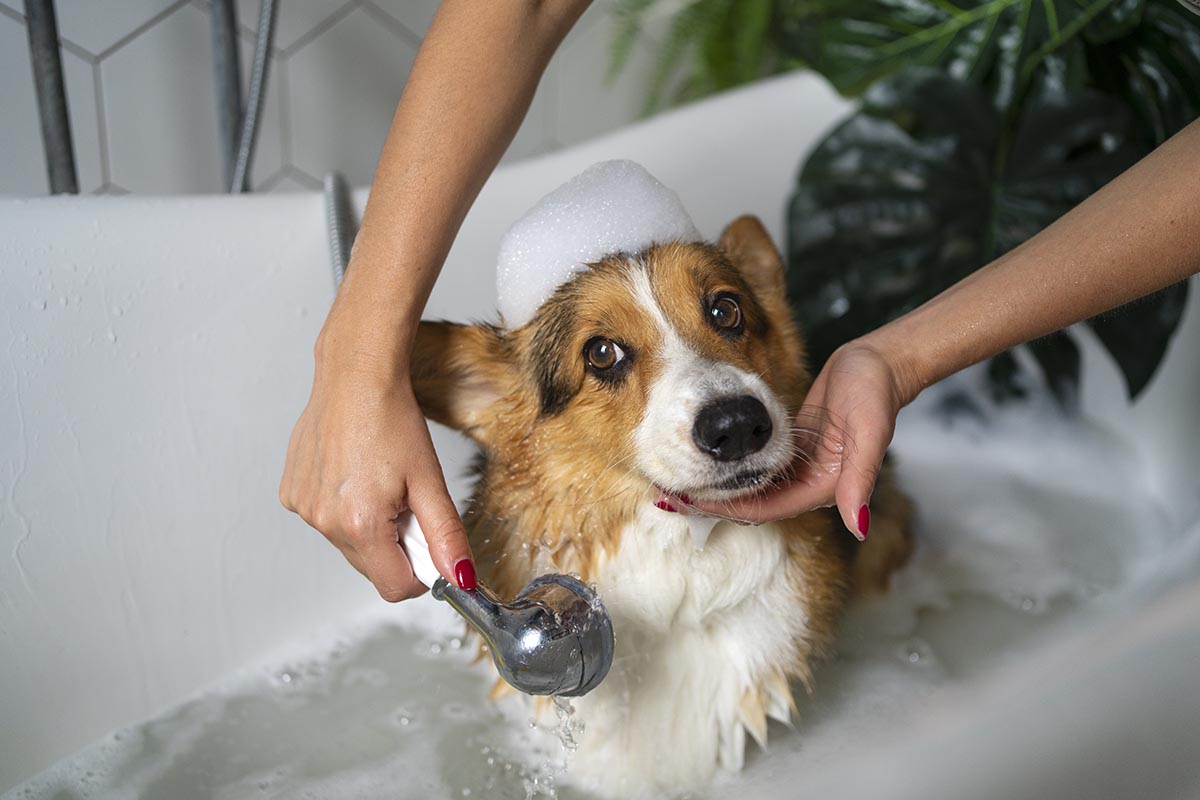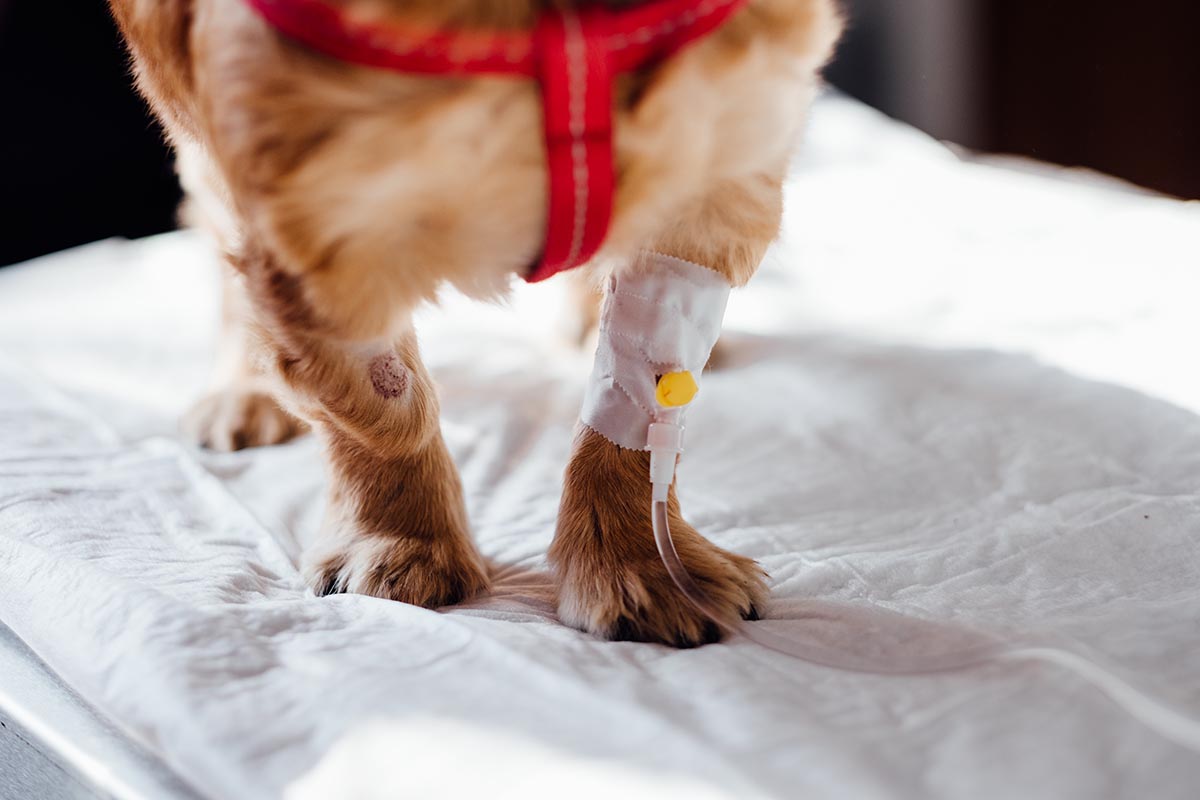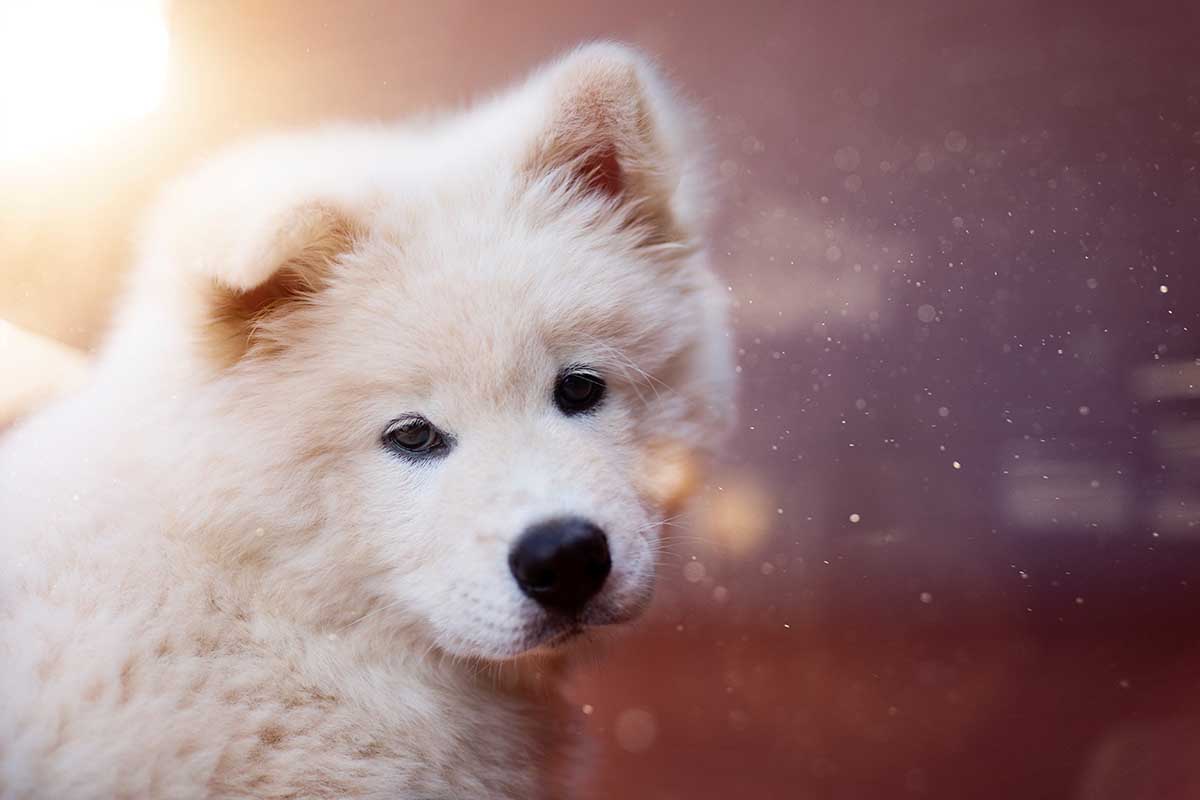If you’re wondering how to bathe your dog properly, it’s important to remember that it’s not as simple as just adding water and shampoo. According to Linda Easton, CPG, ICMG, president of International Professional Groomers and proprietor of Canine Concepts in Salem, Oregon, a dog’s bath can be more challenging than expected.
Regular baths are essential to taking good care of your dog, and unless your dog has been playing in mud puddles all afternoon, a monthly bath should be plenty. However, some dog breeds, especially those with longer coats, will need more regular washings and possibly even trips to the groomer than others.
When it comes to shampoo, it’s essential to select the right one for your dog, such as a puppy-formulated shampoo or a gentle shampoo, and to avoid using human shampoo, which can be unpleasant for a dog’s skin.
To make bath time more enjoyable for everyone involved, try using the best smelling dog shampoo, which can be found through recommendations from your vet or groomer.
How to Properly Bathe Your Dog: How Frequently Should You Bath Your Dog?
A monthly bath should be plenty unless your dog has been playing in mud puddles all afternoon. Some dog breeds, especially those with longer coats, will need more regular washings and possibly even trips to the groomer than others. Ask your physician or groomer how often they recommend bathing your dog. However, monthly bathing is essential.
According to Easton, a dog’s skin develops a new layer of cells once every 30 days. In this way, dead cells are shed. That’s the ingredient in dander and similar products. A decrease in shedding is achieved through consistent grooming or bathing.
Main Products, Tools, and Resources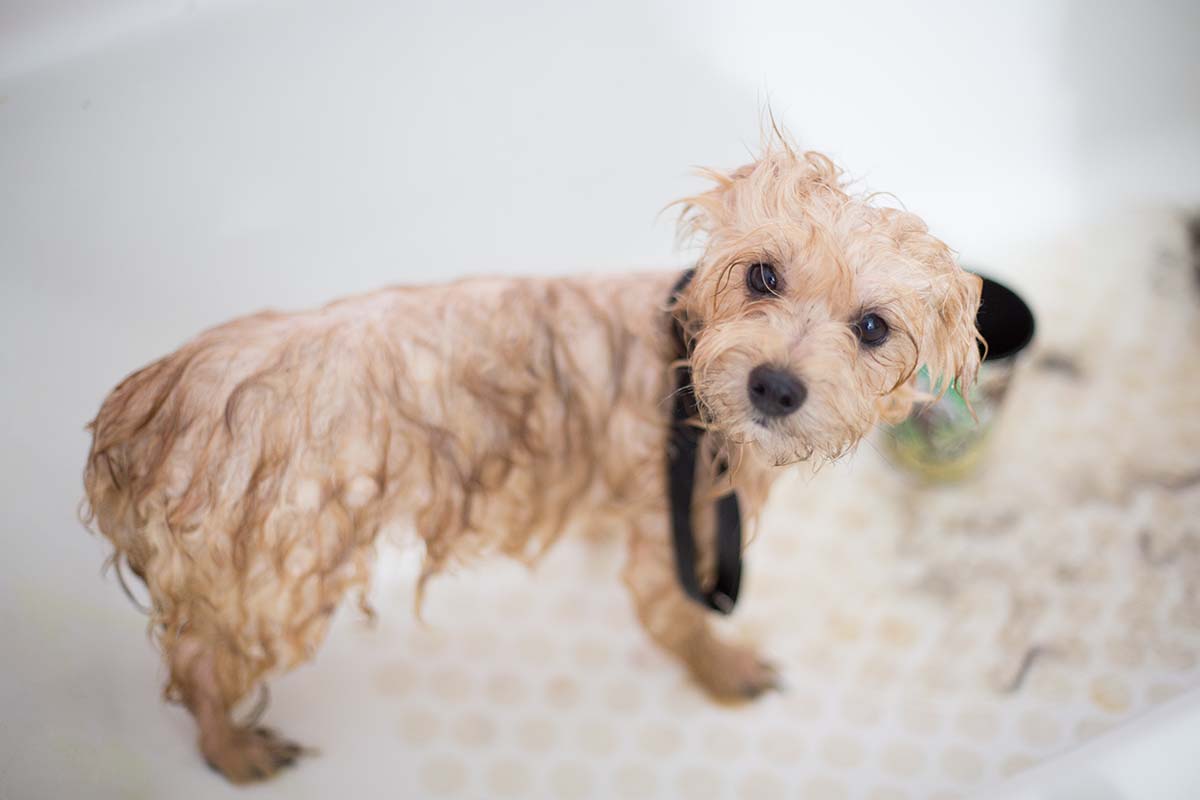
The first thing you’ll probably have to decide is where you’ll be giving your dog a bath. Your dog’s size will be a major factor. A little dog could be washed in the kitchen sink, but a huge dog would need a lot more room. Dog-specific bathtubs, either freestanding or integrated into a home’s plumbing, are favored by some dog owners.
If you don’t want fur and dirt tracked into the rest of the house, it’s best to use a dog-specific bathing place. However, if you’d rather use the main bathroom tub, that’s very acceptable too. Pick a location where you won’t have trouble letting your dog in or out of the cleaning area.
Then, have everything you need close before turning on the water. “You want to have everything you need right where you can reach it,” explains Easton. Don’t waste time looking for conditioner while chasing a dripping puppy around the house. Towels, shampoo, and conditioner should top your list of must-haves. You should also consider having an eye wash and nonslip bath mat nearby.
Selecting the Right Shampoo and Conditioner
The proper supplies are essential for a successful dog bath. Easton advises his readers to use dog-friendly shampoo. The skin pH of dogs is different from that of humans. That means they have a higher pH or alkaline. Human shampoo can be unpleasant to the skin, so it’s best to avoid using it.
Easton recommends using a puppy-formulated shampoo while washing a dog. Puppy shampoo has a pH that is similar to that of a dog’s eyes, so it won’t irritate them as much if it gets in there.
Ask a groomer what they use if you are unsure of what to buy for your dog. Easton recommends going with a gentle shampoo. A shampoo formulated to treat your dog’s problem (such as itchy skin) may be the best option.
After washing your dog with shampoo, the following step is to apply conditioner. Because shampoo removes the skin’s and hair’s natural oils, using a conditioner afterward is recommended whenever personal grooming is performed at home. Easton explains, “Your conditioner rehydrates the skin and seals off all the pores on the outside of the hair shaft.” The conditioner essentially helps you replenish lost moisture.
Methods for Washing a Dog
The good times start rolling when you’ve settled on the ideal location and stocked up on all the necessary equipment. Our experts have come up with the following bathing routine:
Get your dog to enter the tub or washing station willingly. The process can get off to a beautiful start with the help of some tasty treats!
Use water to dilute the shampoo. You can either pour some into a bowl of water or fill the shampoo dispenser with water. Adding water to shampoo makes it foam more and distribute more easily. Most shampoo, Easton says, is quite thick and concentrated, so diluting it with water can make it more user-friendly.
Saturate your dog with warm water. According to Easton, using your hand to feel the temperature is perfectly OK.
The dog needs two washes. According to Easton, when you use shampoo for the first time, it bonds to the filth and makes it easier to rinse away. The second time around, you give your skin a thorough cleansing and wring out any residual oil or dirt from your hair.
To evenly distribute the shampoo, Easton suggests using a loofah sponge. Make sure you don’t forget about areas like your feet, arms, and stomach. Make it fun for everyone involved. The whole dog can benefit from a good massage using your hands. And if you’re using warm water and the dog’s in a warm environment, it should be a pleasant experience for the dog,” she explains.
Apply conditioner. You should let it sit for a while and then wash it off.
Rinse the fur thoroughly until no trace of the cleaning solution remains. “You need to give them a good scrub, but you also need to get all the soap out. Easton argues that this is the utmost significance. For the simple reason that leaving soap residue on the skin can be irritating. It’s even more inhumane than not bathing them at all.
Face Washing for Dogs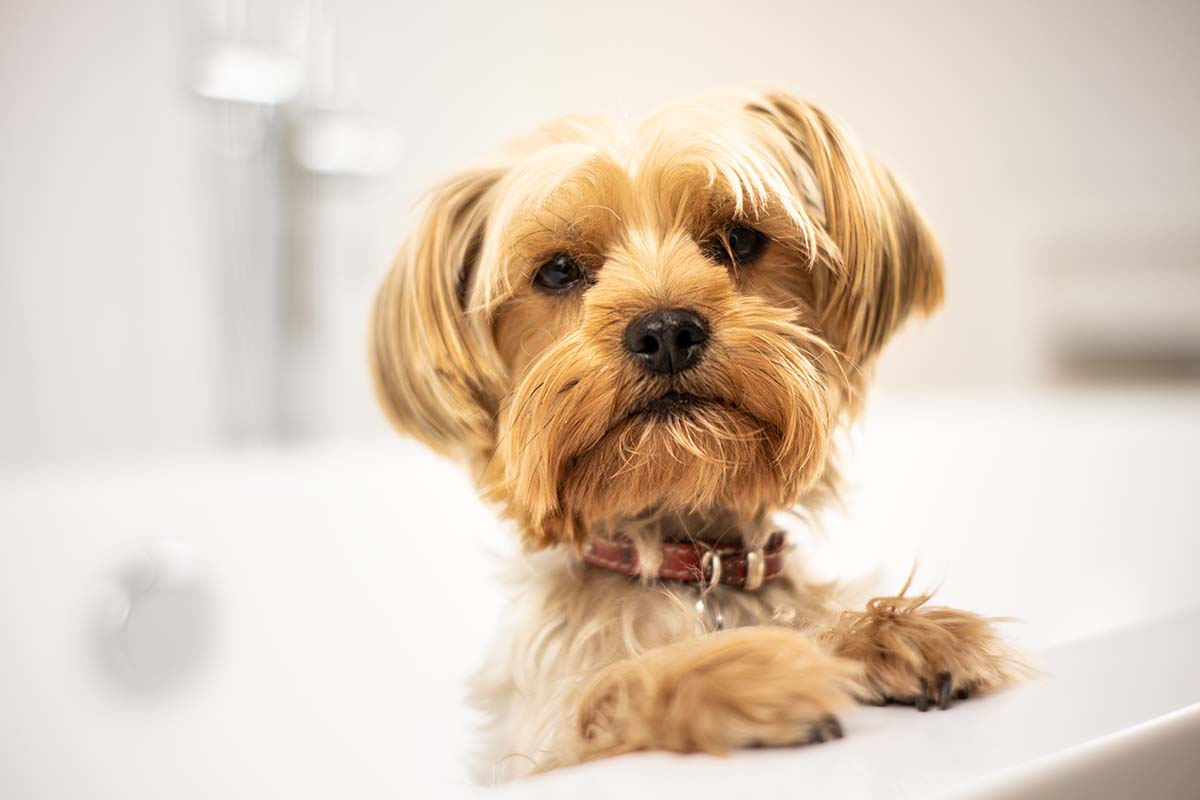
One of the more challenging aspects of giving your dog a bath is washing his or her head. Avoid getting shampoo or water near your dog’s eyes, nose, or ears. Easton suggests doing this last, using a washcloth to wipe down your pet’s face after the rest of the bath.
Wash your dog’s face and head with the soapy towel, and then rinse with a clean cloth dipped in clean water. Easton advises that make sure all the soap is gone from those spots.
Avoid getting shampoo in the puppy’s eyes as much as possible, even if you’re using puppy shampoo made specifically for sensitive eyes. Be prepared to apply an eye wash if shampoo enters your dog’s eyes when bathing. Easton recommends gently brushing away your dog’s eye goobers with a moist toothbrush if your dog has them.
Tips for Bathing a Dog that Despises Water
Some dogs (like golden retrievers) adore water, yet the sound of a running faucet can be terrifying to others. Consider showering your dog with praise and treats while bathing him to counteract this. Treats are great, but praise is even better! Help your dog associate the sight of you grabbing the dog shampoo with pleasant memories.
Easton adds that having a partner hold the dog while bathing him is good. And if you can manage it, start bathing your dog when he’s still a puppy.
How to Properly Bathe Your Dog: Follow-Up Steps for the Tub
Start by giving your dog a thorough towel bath. Then, use a hairdryer designed for dogs or a human hairdryer set to medium or cool. As your dog dries, Easton suggests brushing him. You might also let your dog dry in the air if he doesn’t become too cold.
“Every 10 or 15 minutes, run a brush through them as they’re drying, and that’ll help prevent mats or help separate mats if they have them,” Easton recommends if you’re air-drying your dog.
After a good bath, your dog will feel and smell better, too. And the satisfaction of knowing you’ve done a good deed for your dog’s well-being and good looks.
